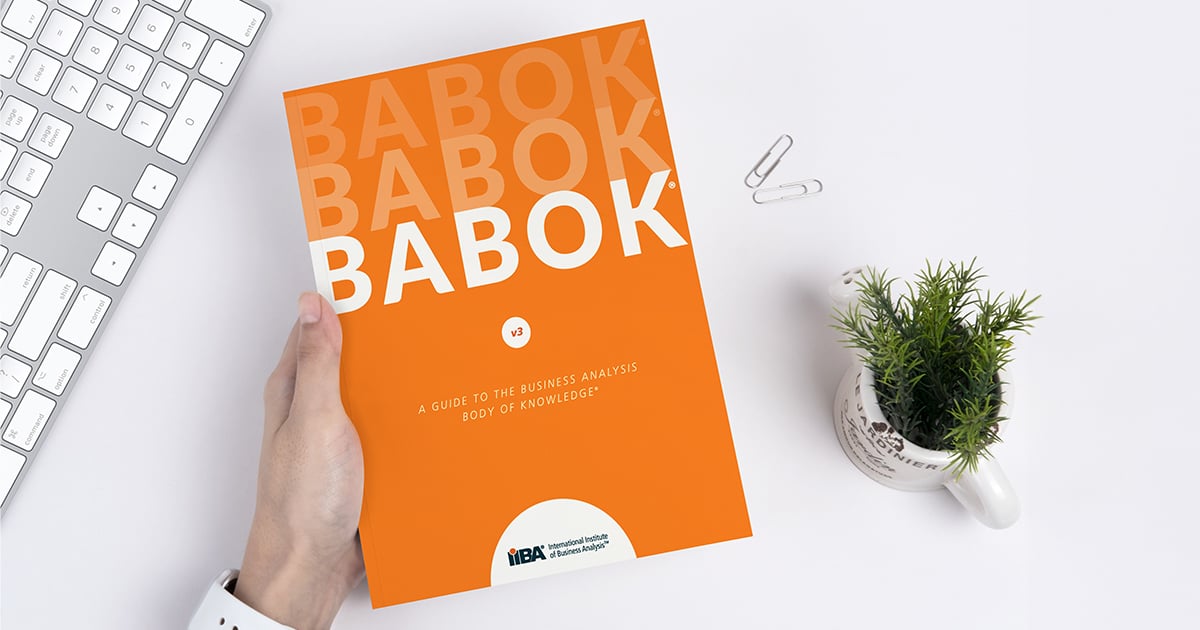3 Tools Every Business Analyst Should Know
Disclaimer: The views and opinions expressed in this article are those of the author and may not reflect the perspectives of IIBA.
Receive free IIBA updates and exclusive content!

Imagine you’re a chef tasked with cooking a delicious meal for your customers. You have all the ingredients but no knives, pots, pans, or even a stove.
How are you going to prepare the food? You can't just throw everything in a blender and hope for the best. You need the right tools to chop, slice, dice, boil, fry, and bake your way to culinary success.
The same goes for business analysis professionals, whose bread and butter consists of complex data, processes, systems, and solutions.
They need the right tools to collect, analyze, visualize, and communicate their findings and recommendations. They can't just rely on a spreadsheet and a PowerPoint presentation (i.e., the blender) to impress their clients.
Using the right tools can make a huge difference in the quality and efficiency of your work. It can also make your work more fun and enjoyable. Who doesn’t love the little confidence boost that comes from putting knowledge into practice?
For business analysis professionals, the best place to start is A Guide to the Business Analysis Body of Knowledge (BABOK Guide). It’s the authoritative, globally recognized standard for business analysis. So that’s where we’ll start too.
1. Process Modelling
Taken from 10.35: Process Modelling, a business process diagram is a graphical representation of a business process workflow. It’s a widely used standard for business process improvement projects.This tool is very effective in capturing sequencing rules more accurately than an activity diagram. It helps business analysts understand, document, and communicate the current and desired states of a process. And it can help identify and eliminate inefficiencies, errors, and risks.
A business process diagram can also serve as a basis for designing and implementing solutions that improve process performance and quality.
2. Use Cases
A use case diagram visually depicts the scope of the solution. It does this by showing which actors interact with the solution, which use cases they interact with, and any relationships between the use cases. A use case diagram is explained in more detail in 10.47: Use Cases and Scenarios.Use cases describe the interactions between the primary actor, the solution, and secondary actors needed to achieve the primary actor's goal. Use cases are usually triggered by the primary actor, but sometimes they can be triggered by a non-human actor, such as another system, external event, or timer.
A use case describes the possible outcomes of trying to achieve a particular goal supported by the solution. It details different paths that can be followed by defining primary and alternative flows. The primary or basic flow represents the most direct way to accomplish the goal of the use case.
Special circumstances and exceptions resulting in failure to complete the use case goal are documented in alternative or exception flows. Use cases are written from the point of view of the actor and avoid describing the internal workings of the solution.
3. Requirements Attributes Table
A requirements attributes table, from 5.2: Maintain Requirements, helps to record details about requirements, including their priority and authorship.It’s a useful tool to document and track various aspects of each requirement, such as its source, priority, status, owner, dependencies, and acceptance criteria. By using it, business analysts ensure the requirements are clear, consistent, complete, and aligned with project objectives and stakeholder needs.
The table also fosters communication and collaboration among the project team and stakeholders, as well as change management and quality assurance processes. It acts as a central database of information for each requirement, including the author's name and the current version number.
Go Even Further
Now that you’ve added three strong skills to your toolkit, why not add a few more? Register now for our upcoming public webinar, “Expert Insights: Enhancing Your Business Analysis Toolkit,” led by thought leader and author Howard Podeswa.An authority in the field of business analysis with three acclaimed books under his belt, Howard will delve into the invaluable knowledge they contain. He'll focus on two member-exclusive publications in IIBA’s Digital Library: The Business Analyst's Handbook and UML for the IT Business Analyst: A Practical Guide to Requirements Gathering Using the Unified Modeling Language.
Through his practical approach, Howard will provide a wide array of techniques, strategies, and templates to incorporate into your practice.
The BABOK Guide is just the beginning…
Everything you need to make a project successful is at your fingertips. Purchase A Guide to the Business Analysis Body of Knowledge (BABOK Guide)—the globally recognized standard for the practice of business analysis.
About the Author:

Robert McClements is the Communications and Media Relations Specialist at IIBA. With over six years of communications experience at non-governmental organizations, he contributes to IIBA’s marketing and communications efforts in support of the business analysis profession and community. Residing in his hometown of Montreal, Robert enjoys spending time with his family, listening to music, and reading.
